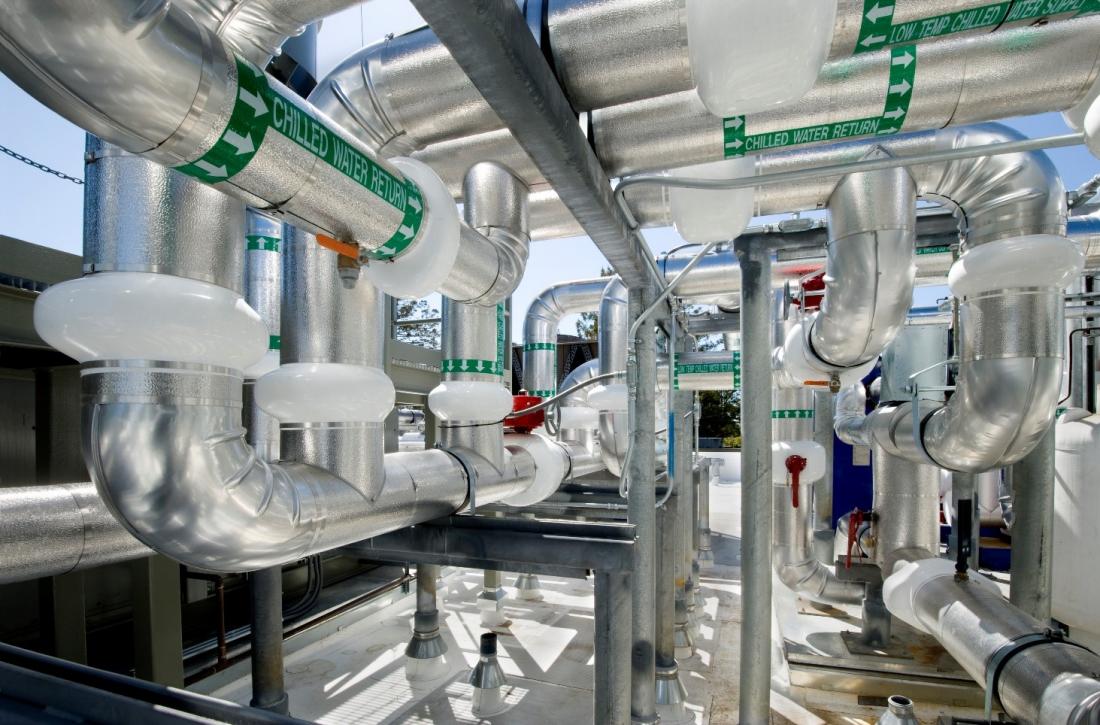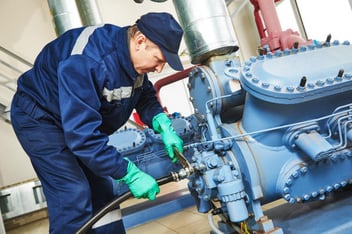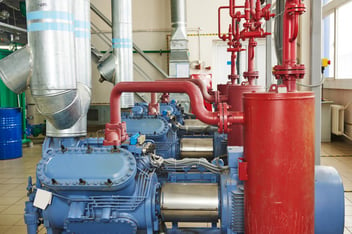Technical Safety BC introduced a safety order for ammonia refrigeration plants in March, 2021 to address safety concerns around secondary coolant over-pressurization in new and operating ammonia refrigeration plants in BC.
Why is this a concern?
If ammonia leaks into a secondary coolant piping system, it may lead to piping over-pressurization and the release of dangerous ammonia gas. When the secondary coolant is trapped, such as by isolation valves on either side of a heat exchanger, then the coolant will absorb the leaking ammonia until it’s fully saturated. If ammonia continues to leak, then the pressure rise may lead to piping failure and an ammonia release unless appropriate precautions are taken.
What can I do to reduce the risk of over-pressure?
The responsibility for running a safe ammonia refrigeration plant is in the hands of the owner and their qualified individual. Using professional judgement, the qualified individual should decide how to mitigate secondary coolant overpressure. They may decide to use one or several of the methods listed in the safety order or a different one altogether. The intention of the safety order is to provide plant owners with the flexibility they need to manage safety according to their site-specific needs and available resources.
How is Technical Safety BC working with clients to achieve the safety order requirements?
Every duty holder needs to submit a proof of compliance by the due date listed in the safety order. A percentage of the received documents will be reviewed by Technical Safety BC’s technical team for sufficiency. Every duty holder will be given the opportunity to work directly with Technical Safety BC to address deficiencies.
What are some of the ways to meet the safety order requirements?
Safe operating procedure and valve management system:
Use administrative controls developed by a qualified individual to ensure the secondary coolant is never trapped between isolation valves across the heat exchanger unless under controlled conditions. This requires the submission of a safe operating procedure to Technical Safety BC.
Such safe operating procedure is most effective when addressing, at a minimum, the following:
- The circumstances that the valves could be operated
- Authorized personnel who could operate the valves
- Steps to take if ammonia leak occurs while secondary coolant line is isolated
- Precautions and hazard notifications
- Locking and tagging of isolation valves
- Staff training
- Provisions for periodic reviews of the procedure
Inspection for integrity:
Predict the safe operating condition of the heat exchanger through scheduled and pre-planned inspections developed by a qualified individual. The inspection results must be periodically evaluated by a professional engineer to certify the heat exchanger’s fitness for service. See the safety order for the minimum requirements to meet inspection for integrity.
Pressure piping design:
If the secondary coolant piping is designed to withstand the maximum pressure exerted by an ammonia leak, the risk of over-pressurization and failure is effectively mitigated.
Pressure safety devices:
When designed appropriately, a pressure relief device may be one of the most appropriate methods to prevent over-pressurization. The valve must discharge into a holding tank for safe disposal of the contaminated discharged fluid (as per CSA B52, clause 8.2.2). The relief valve and its associated discharge piping and holding tank must be designed and sized appropriately by a class REF licensed contractor or professional engineer who knows the characteristics of the fluid and engineering considerations that must be considered. Different applications have different requirements so the following may be used as guidance:
- What could cause the relief valve to pop?
- At what rate could ammonia leak into the secondary coolant piping?
- Would the relief valve be expected to “pop” during normal operation?
- What is the fluid phase discharging from this relief valve (liquid/gas/two-phase)
- At what rate would the pressure build up in the secondary coolant piping?
- When a relief valve fully relieves, what are the risks for the piping system? How fast, what flow rate, and what volume does a designer need to anticipate?
- What maximum volume and thrust pressure is expected?
- What considerations does the designer need to consider to size the containment tanks?
- Are there any design and operating process management hazards for releasing the contents into this containment?
- Could ammonia gas get into the room through this tank? Is the ventilation system adequate to handle such ammonia concentration levels? Are there ammonia gas sensors located close to this tank to alarm accordingly?
All considerations must be demonstrated in the valve sizing documents to be submitted to Technical Safety BC as proof of compliance.
Valve sizing methods described in code books (ASME Sec VIII, API 520, etc.) and Literature published by reputable engineering organizations (IIAR, ASME, AICHE, etc.) may be used in the application of the assumptions and considerations described above.
Bottom Line
Meeting the safety order requirements will improve the safety of ammonia refrigeration plants across the province. Owners, licensed contractors, and professional engineers should collaborate to find a solution that meets their site-specific needs and effectively addresses the hazard of secondary coolant over-pressurization. By working together, we can improve the safety of ammonia refrigeration plants in BC.
Registering your refrigeration system design
To improve the safety of ammonia pressure vessels, Technical Safety BC requires refrigeration system designs to be assessed by a professional engineer and registered according to the Safety Standards Act.
Design registration provides several benefits:
- Holds the qualified individual accountable for ensuring they understand the regulatory requirements that exist to keep BC safe.
- Become a part of the larger safety system. The information submitted is used to determine areas of highest risk in the province, identify trends and make informed decisions about codes and standards.
- Ensures the right people, including contractors, engineers, specialists and owners, come together to develop a safe design and lead the project into a safe startup and operation.
*Qualified individuals include a professional engineer, a licensed class REF contractor, or person in charge of plant with a certificate of qualification of “refrigeration operator” or “4th class or higher power engineer”.




